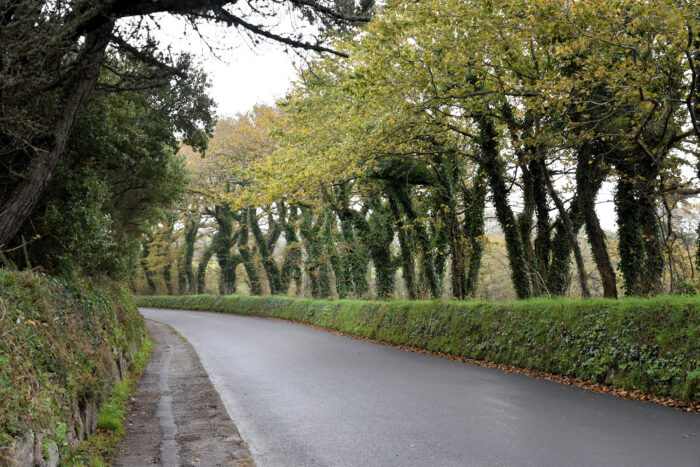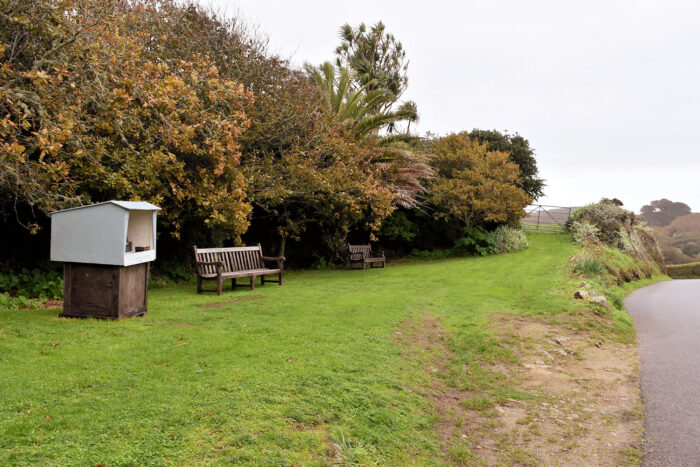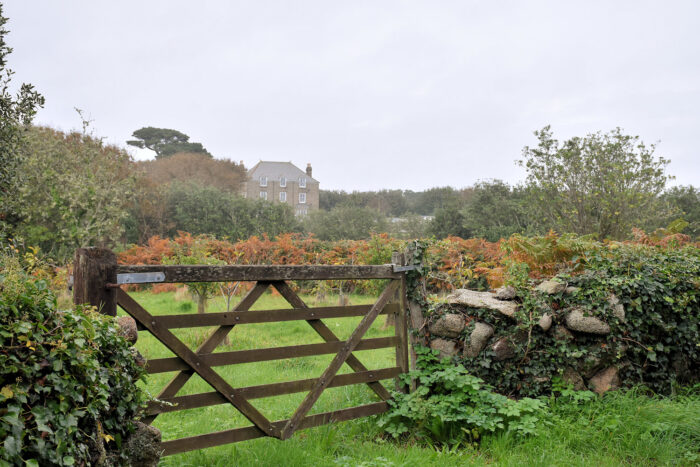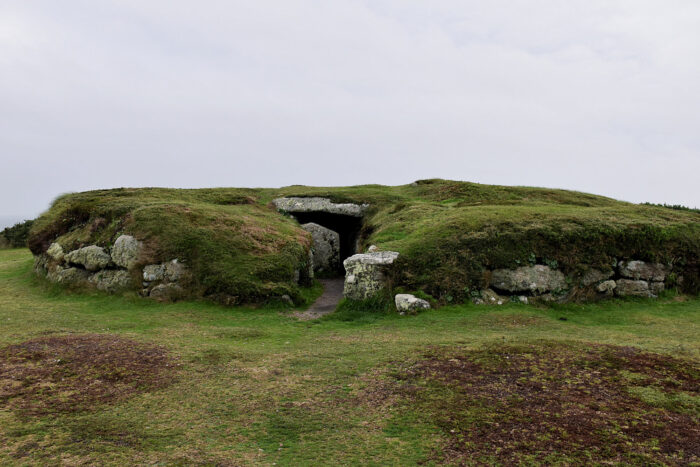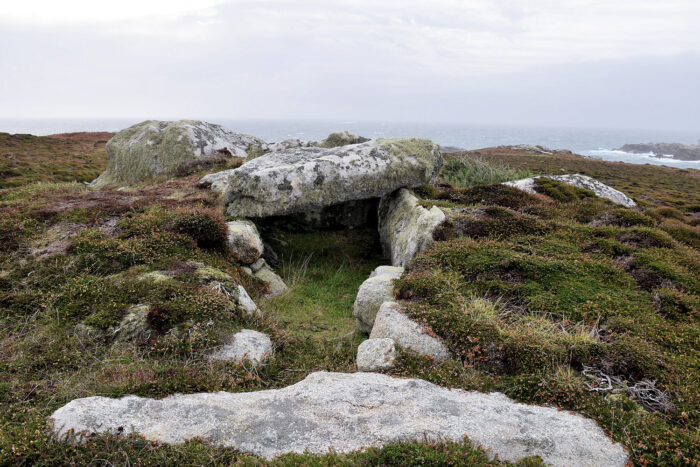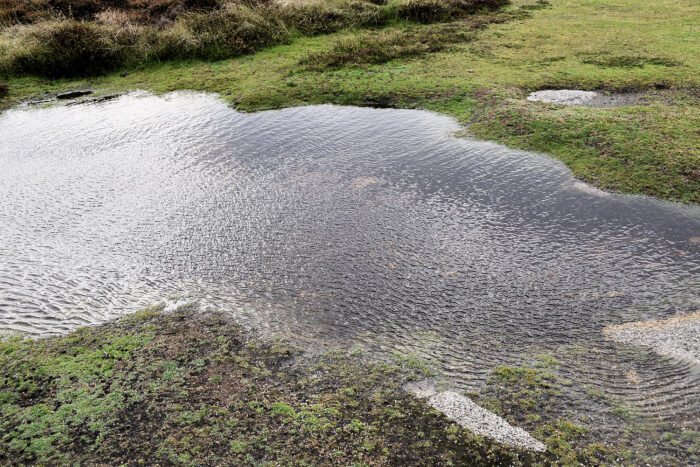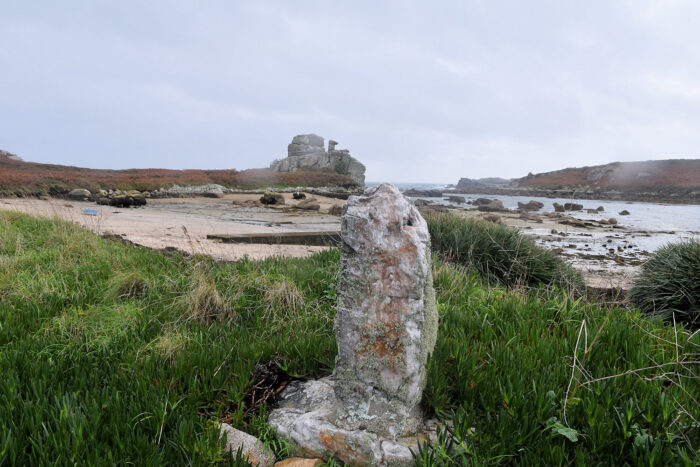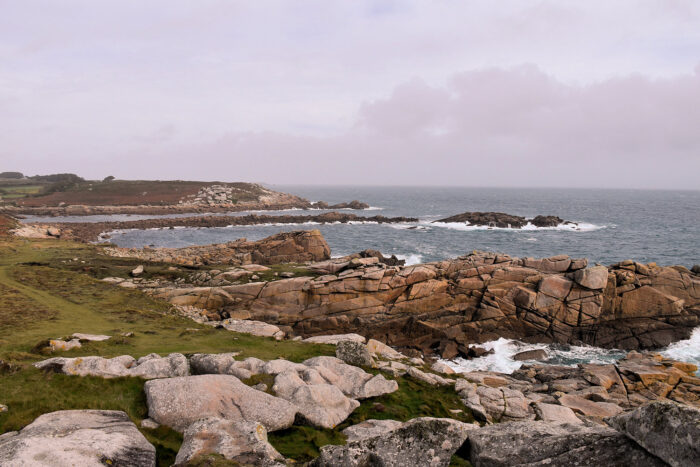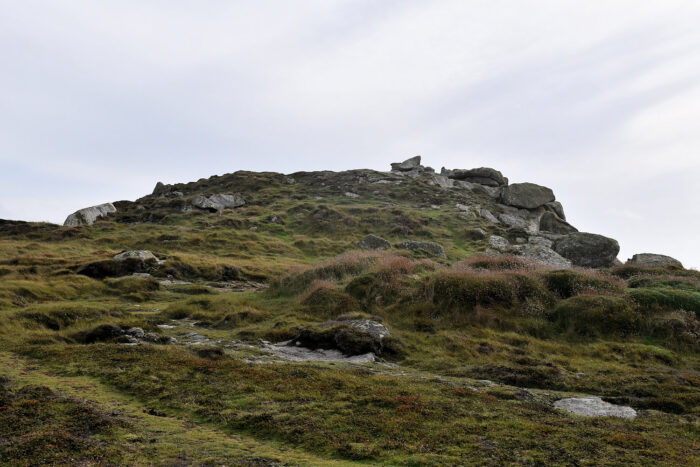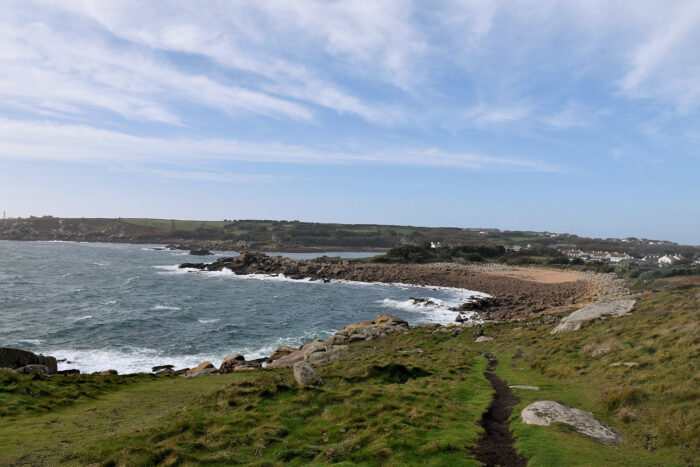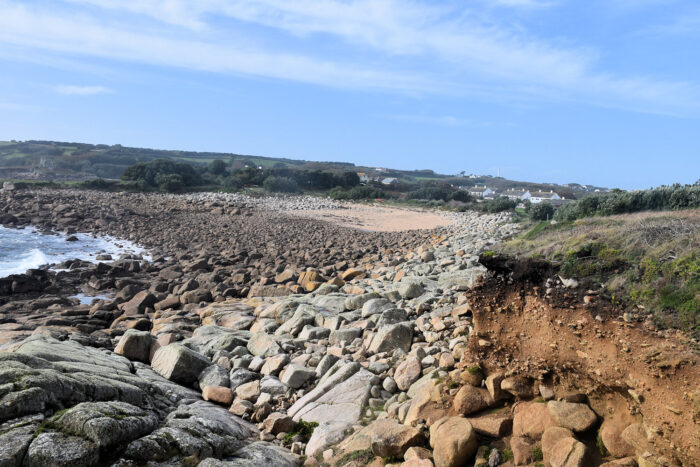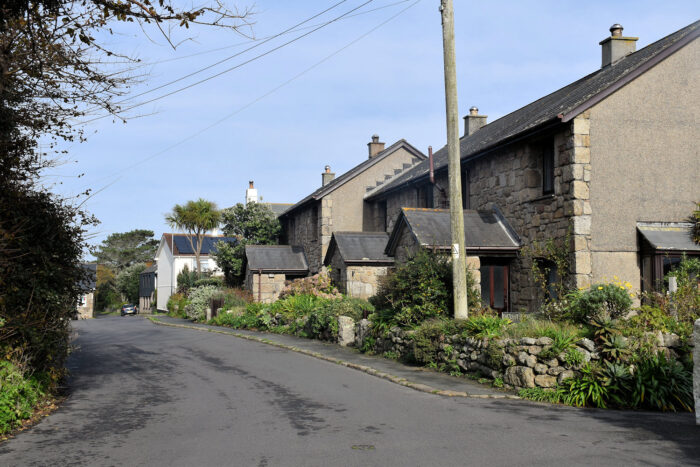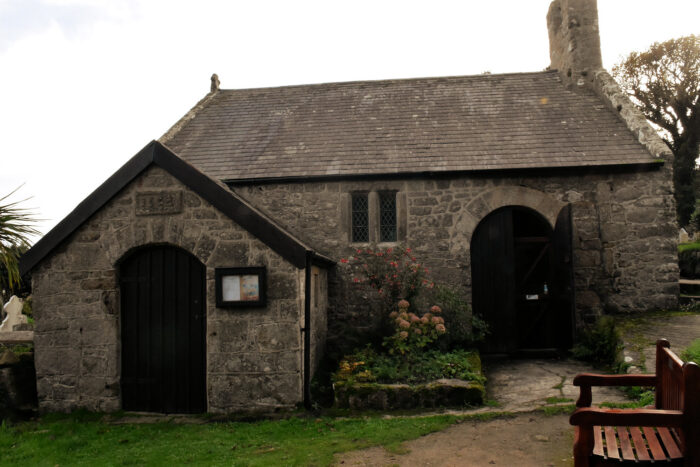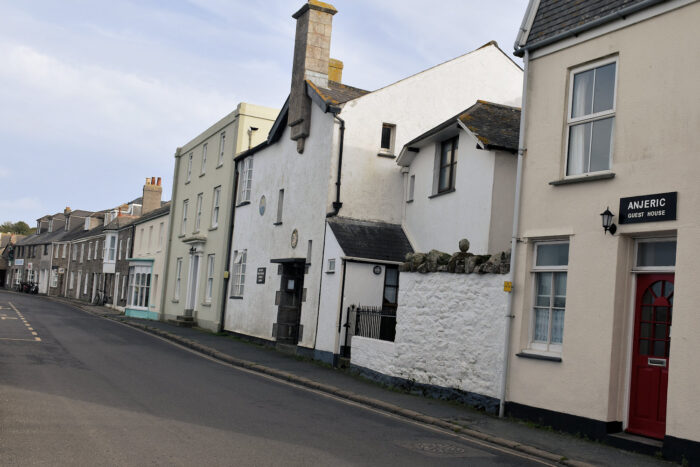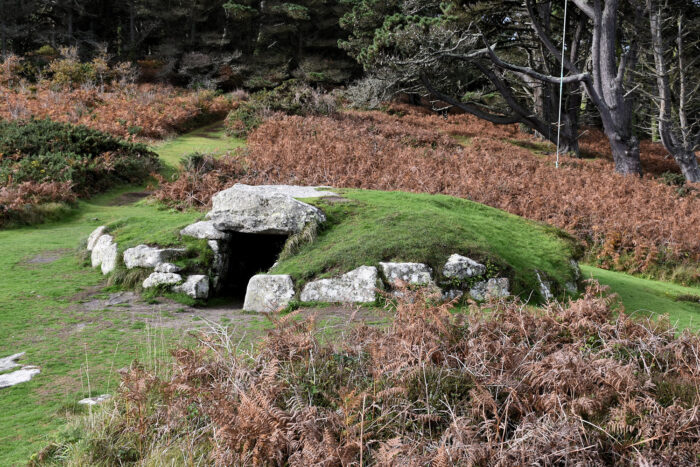Today, I walked across to the other side of St Mary’s and then came back along the coastal path. Some photos!
I like roads with footpaths. I think there needs to be more of them.
A roadside bookstall.
A Bronze Age burial chamber. I get you weren’t expecting that!
Dating from about 1500 BC, Porth Hellick is the largest entrance grave in a scattered cemetery that includes six others, and two low cairns. At the time when this imposing structure was built, most of the Isles of Scilly probably comprised a single landmass. The sea level steadily rose over the prehistoric period, engulfing the wide central and fertile lowlands that had been dry land in the Neolithic period, 4,000–5,000 years ago. . . . This mound is built around a stone-lined, roughly rectangular chamber, about 12 feet (3.5 metres) long and up to 5 feet (1.5 metres) high, which is roofed by four massive capstones. A long unroofed passage leads from the edge of the mound to the chamber entrance, its sides lined with stone slabs and rubble. Unusually, passage and chamber are at angles to each other rather than in line, and the junction between the two is marked by a projecting jambstone, which almost blocks the passage.
English Heritage
As it says, there are other small entrance graves on the headland, but most of them are not very obvious (there are a lot of large rock formations around).
But some are.
You know it’s windy when your puddles have waves.
(Note large rock formation in the background) A plaque at the base of the stone says
This stone marks the place where the body of Admireal of the Fleet, Sir Cloudesley Shovell, was ashore after his flagsip. HMS Association, was wrecked on the Gilstone Rocks on the night of 22 October 1707
More: Scilly Naval Disaster of 1707
The headland in the background is the site of the burial chamber, and to the right of here is
the Giant’s Castle, and the site of a small Iron Age hill fort, with large natural rock formations. Also incrediblty windy.
The little town to the right there is Old Town.
Close to the beach are a number of hut circles (bit hard to see in photo) that indicate an early village or settlement.
A rather rocky beach.
Old Town. There’s not much there.
It does have a cute little church.
The Anglican church of St Mary was built at Old Town, Isles of Scilly during the 12th century, perhaps around 1130. Re-building was carried out between 1660 and 1667 including the addition of the south aisle, and a west end gallery for soldiers from the Garrison. Further improvements were made in 1743 when the east end was rebuilt. By the nineteenth century, it was derelict and under the orders of Augustus Smith, Lord Proprietor of the Islands, it was restored.
Wikipedia
Back in Hugh Town finally.
Small plane!
A row of houses along the beachside street. Like most places that rely on tourism, a lot of the houses are used for tourist accommodation
including the front of this one. (Top left window.)
